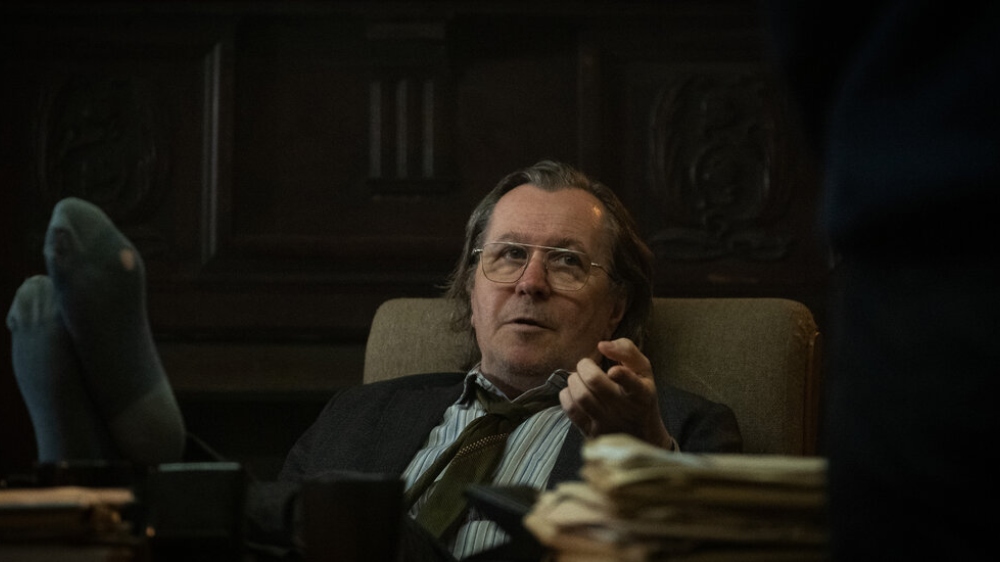
For British spies, Slough House is the end of the line. A home for misfits and losers, its grimy offices are a world away from MI5’s high-tech headquarters. Slough House is ruled by the dissolute Jackson Lamb (Gary Oldman), a sort of Smiley gone to seed.
Based on a series of novels by Mick Herron, Slow Horses is the opposite of James Bond’s glamorous, high-energy thrillers. Dark and dingy, it moves at its own idiosyncratic pace, finding suspense through an excellent ensemble cast that includes Kristen Scott Thomas, Jack Lowden, Olivia Cooke, and Jonathan Pryce.
Will Smith (Veep) adapted the novel for television, and all six episodes of the show were directed by James Hawes, who chose to work with cinematographer Danny Cohen on the high-profile gig.
While Cohen’s recent work has included A Very English Scandal and Eurovision Song Contest: The Story of Fire Saga, he has frequently collaborated with director Tom Hooper, earning an Academy Award nomination for his work on The King’s Speech.
Cohen spoke with Below the Line on Zoom from London. Please enjoy our chat below:
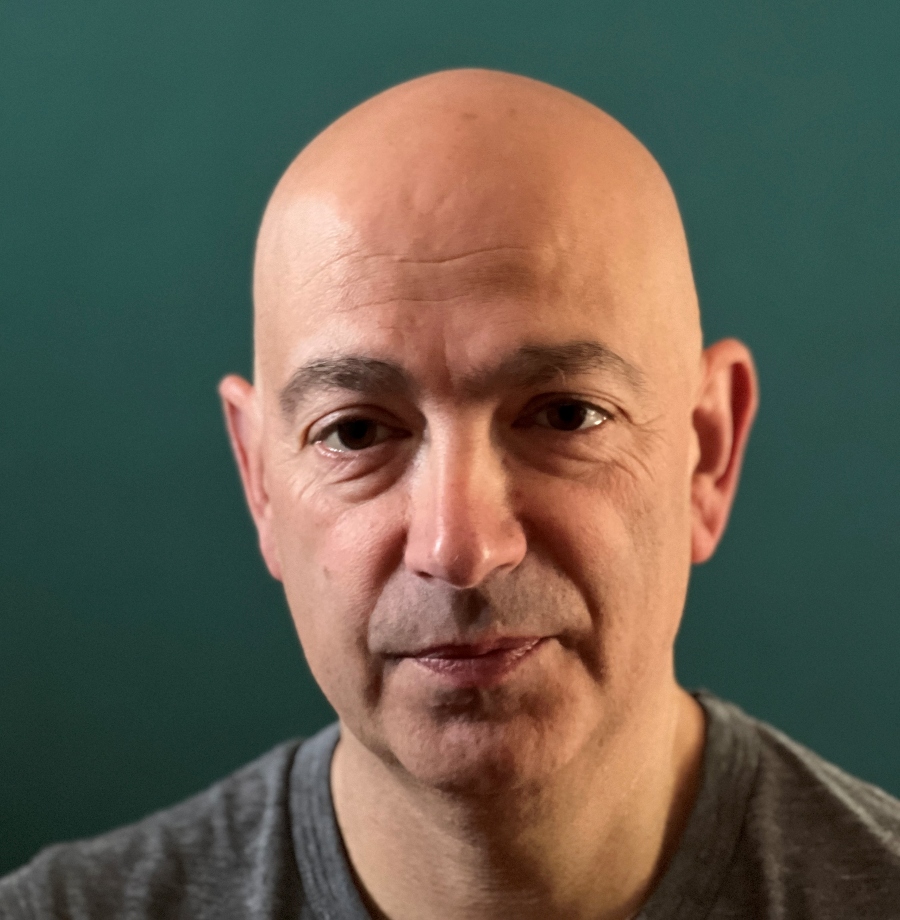
Below the Line: Slow Horses is not your typical espionage show. What drew you to the series?
Danny Cohen: These days, series are often chopped up into different directors and DPs per episode. Part of the attraction for me was to be able to tell the whole story. The ability to go through and pay attention to detail from beginning to end was great. It gave us a lot of control.
Also, the series plays with expectations. For a spy show, it’s actually quite grungy. I enjoyed bouncing between the high-end hub of the real MI5 and this low-rent Slough House. The way Mick Herron wrote the books, they’re very detailed. He describes the actual Slough House building, which is in Aldersgate opposite the Barbican. So we couldn’t go wrong. We built a big, integrated set to shoot the interiors, but we shot the Slough House exteriors at the actual location.
We had a little snoop inside the building itself. It didn’t take much imagination to sort of rewind 20 or 30 years, [and] cover it in dust. Everything in Slough House — the age, the patina, the lights that don’t work — hits hard against the supposedly high-tech world of proper spies. The key is we’re bouncing from people who should be competent spies living in a kind of steel and concrete world, to supposedly incompetent people living in a crap world.
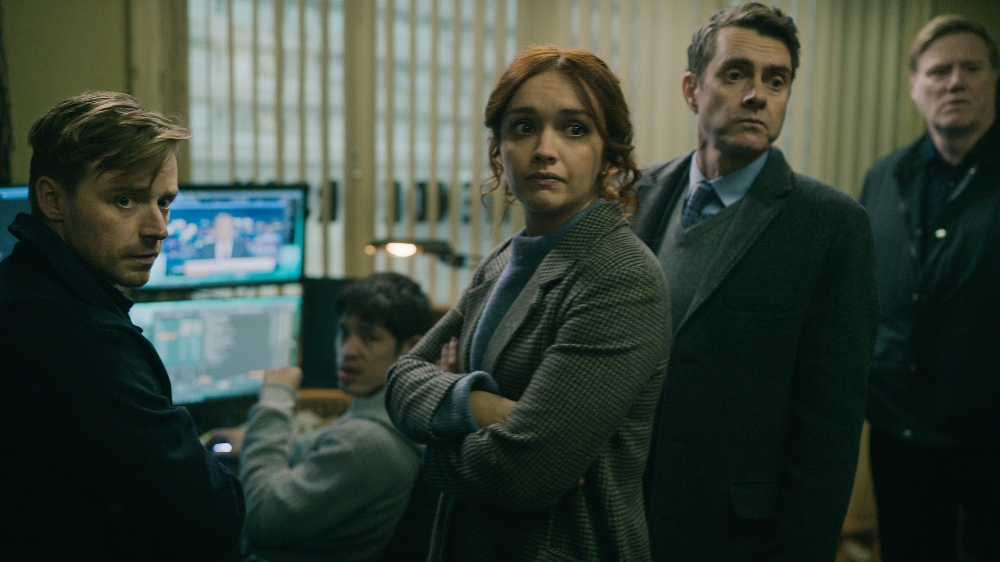
BTL: Can you talk about how COVID affected the production?
Cohen: We started prep in September 2020. We kind of skated around COVID, [as] we shot from December 2020 to, I think, June 2021. Shooting is tricky enough, and then when you add a layer of testing, precautions, and protocols, it just adds to the complexity.
BTL: Can you discuss the opening sequence, which features a fantastic chase through an airport terminal packed with extras?
Cohen: I think that was our biggest day with extras. Everybody was tested, everyone on the set had to be negative. We shot in Stansted, which is the third-largest airport in London after Heathrow and Gatwick. Stansted had dropped from something like 70,000 people a day to less than a thousand. They had completely shut down the terminal we were using, so they were very happy to have us shoot in it.
In an odd turn of events, we were able to shoot something far more exciting and action-packed than if we were doing it in the real world, and not during a pandemic. Because we had absolutely free reign over the site. It got to the point where they said, ‘You need an airplane? Where do you want us to park it?’
BTL: You’ve got dozens of set-ups in that sequence. How much time did you have to shoot there?
Cohen: I think we were at Stansted [for] five days. When River (Jack Lowden) comes out of the terminal, that we shot at the football stadium for Tottenham so we could use all those escalators to build a sense of scale.
That sequence was a lot of fun to do, partly because we are taking people down a blind alley. We’re kind of mis-selling the show in the sense that it’s set up as an action-packed spy thriller, a James Bond-type story, and then the show immediately grinds to a halt. You’re suddenly in this definitely not James Bond world where it’s very mundane, people carrying files, intensely boring.
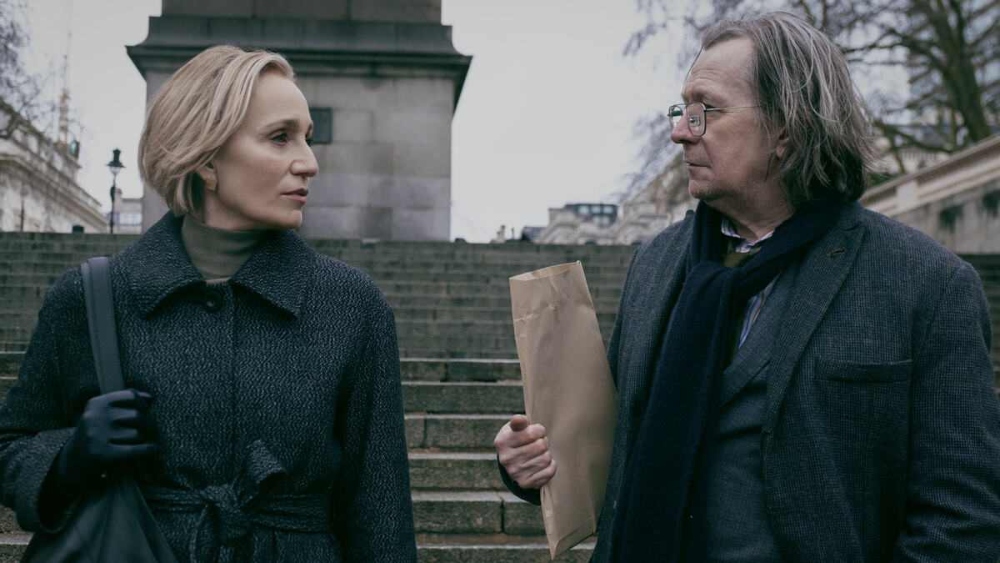
BTL: You can say it’s boring, but you’re actually shooting incredibly complicated and tense scenes, like the one at night where Oldman and Thomas are arguing on a bench by a canal.
Cohen: That’s the Grand Union Canal, it kind of snakes its way across London. The bend where we were filming is just before the London Zoo. The canal leads from Camden Town to Regent’s Park, where the zoo is.
Of course, a lot of the credit for the scene is due to Will Smith’s writing. It’s quite bold to have two people sit on a bench for five minutes and engage in this verbal jousting. The two of them are at the top of their game.
BTL: It’s more than two people talking because you’re using a lot of angles to help accentuate the lines.
Cohen: I think in shooting film, TV, whatever, you are going to inevitably end up at some point with two people having a conversation. So for me, it’s like, what do you do to make that, visually, more arresting than the bog-standard shot, counter shot, reverse shot over the shoulder.
There’s something intensely repetitive about a lot of what we see. Finding an interesting location like the Grand Union Canal is always a massive bonus because that does a lot of the heavy lifting. [For] the opening shot of that scene, we put the camera on a boat drifting down the canal. It’s a different angle than you normally see.
Nighttime presents certain issues. You’ve got to light a bigger area because you don’t have daylight, but the beauty about working at night is its consistency. You get X number of hours where you don’t have to worry about the light changing because of clouds, all those sorts of issues. There’s a bit more consistency you can rely on.
James is a very visual director, so he was into interesting angles. So we shot side on with the depth one way and then depth on the other side. It stretches the frame. You’ve got to push because if you’re going to have five or six minutes of dialogue, being able to put the actors in a situation where the backgrounds change helps greatly.
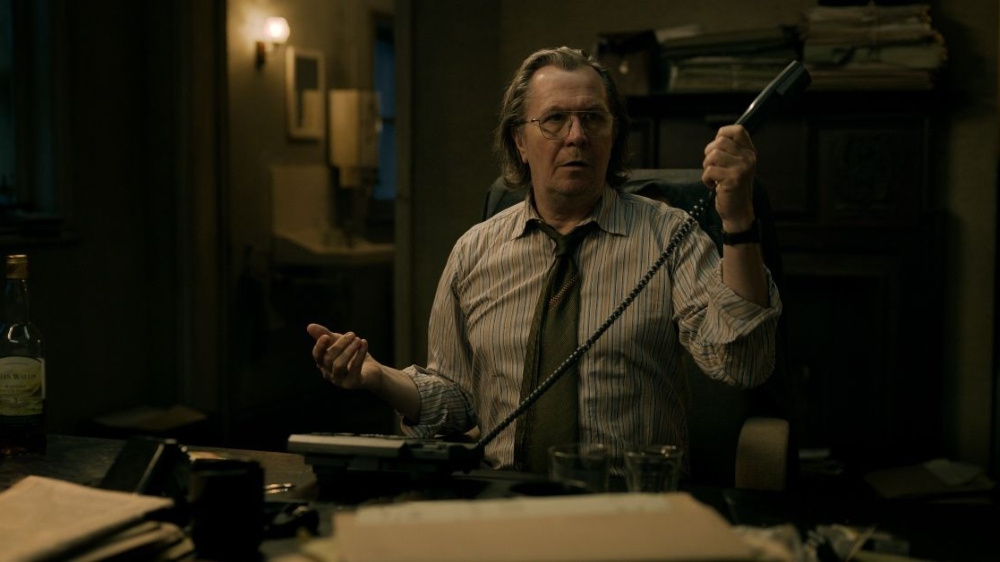
BTL: So you’re shooting a master and then individual shots?
Cohen: I really enjoy James’s approach. He was very specific about the beats he wanted, he knew when he wanted to open the scene and when he wanted to close things down and just have a headshot with the background and focus dropping away. So instantly you can emphasize certain things, you lead the audience down the road, and then use a shot of a face with nothing else to detract attention.
BTL: There’s a scene with Lowden and Sid (Olivia Cooke) in a car at night where you’re in an even more limited space.
Cohen: Shooting anything in a car is a nightmare because of the space restrictions. I kind of knew that one of the angles James was after was from the backseat looking forward. That’s inevitably the best angle because you can put an edge light on both of them in the front seat. The light from outside is essentially in front of them, pointing directly at them. Because you’re in the back seat and cross-shooting, you won’t see that outside light. But you will see a strong profile instead. Again, because it’s night, you can really sculpt the light. It’s not rocket science, but you get strong images even though you are in a very confined space.
The other thing I would say is it’s during a downpour, [with] lots of rain on the windshield, which also helps set the mood. It’s another element to have in front of the camera.
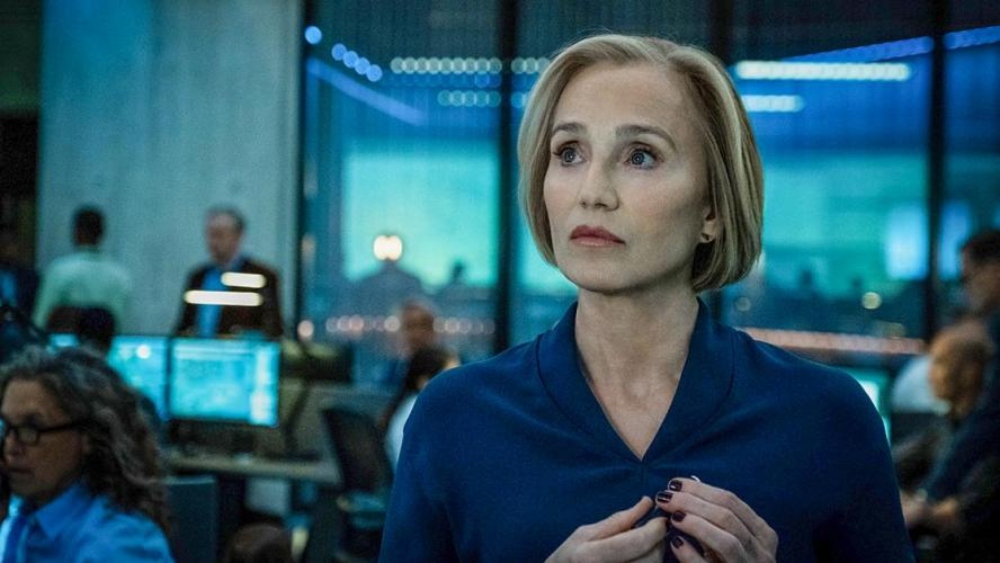
BTL: Do you like working with a DIT during the shoot?
Cohen: We did have an on-set DIT on Slow Horses, which was great. On my most recent project, I’ve been trying to work more simply. I used only one LUT, and that felt all-encompassing. What I mean is that you don’t have to obsess about the image on set. What you’ve got works. You finesse a bit in the post-production grading. What I’ve noticed about the digital world, after we kind of set fire and burned up analog, is that everybody is complicit in de-skilling themselves. Especially in the camera department. What happens is that more and more people know less and less, and what you need to know becomes so complicated that you require certain people for very specific bits of the workflow.
In my head, the simpler things are, the less can go wrong. Also, there’s less to obsess about on set, where the only thing you haven’t got is time. It all has to be worked out beforehand. The less you fiddle, the more you can actually do.
I think the way the world is now, you’ve got to make a plan, and then you’ve gotta have a second plan because every first plan’s going to fall apart at some point.
BTL: Are you going to be shooting Season 2?
Cohen: I did the entire first season. Dead Lions, the second book, has a different director/DP combo. I’m going to do the third book, Real Tigers. We’re starting prep on that in the beginning of May.
Slow Horses is now streaming on Apple TV+.





